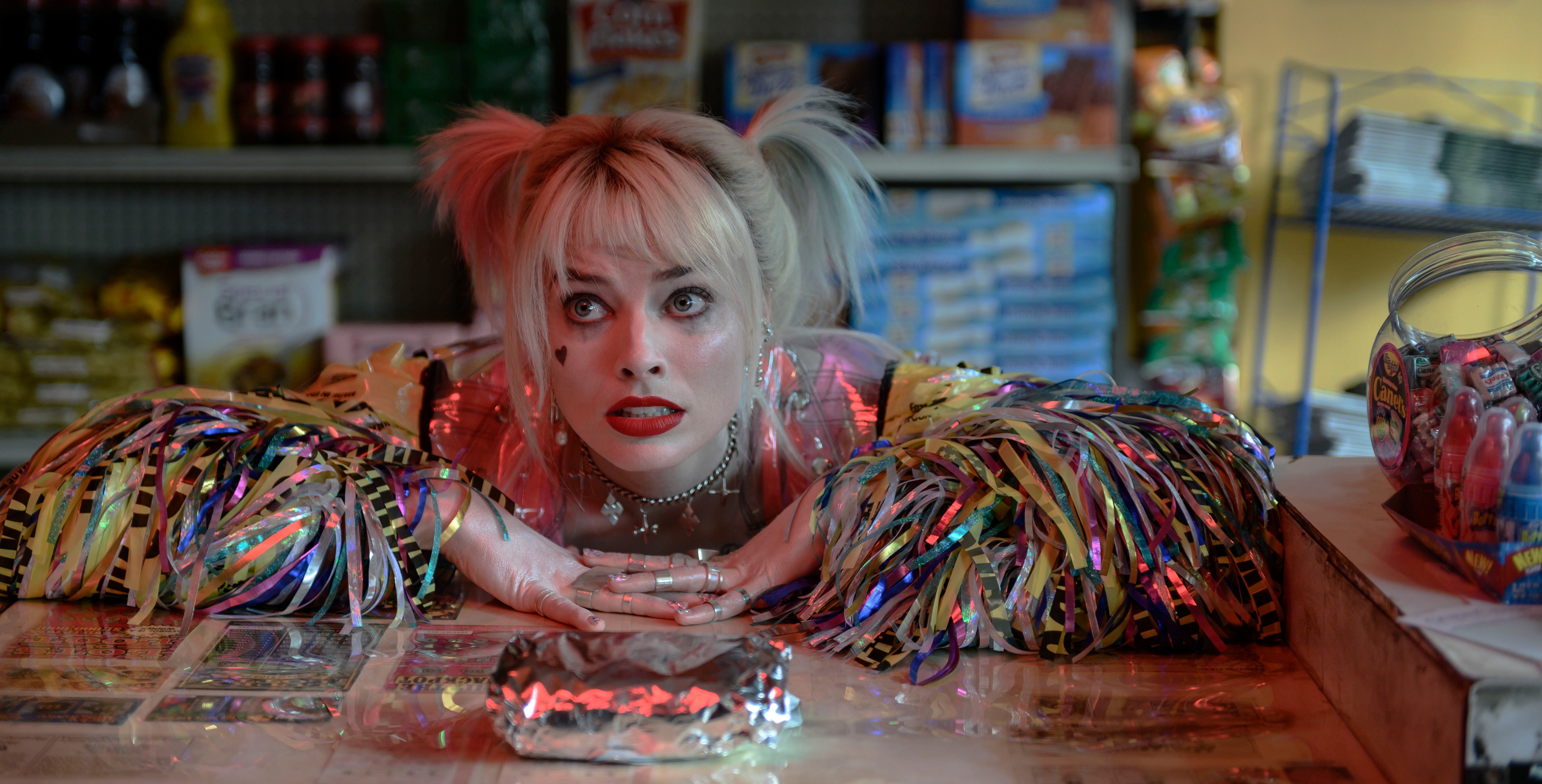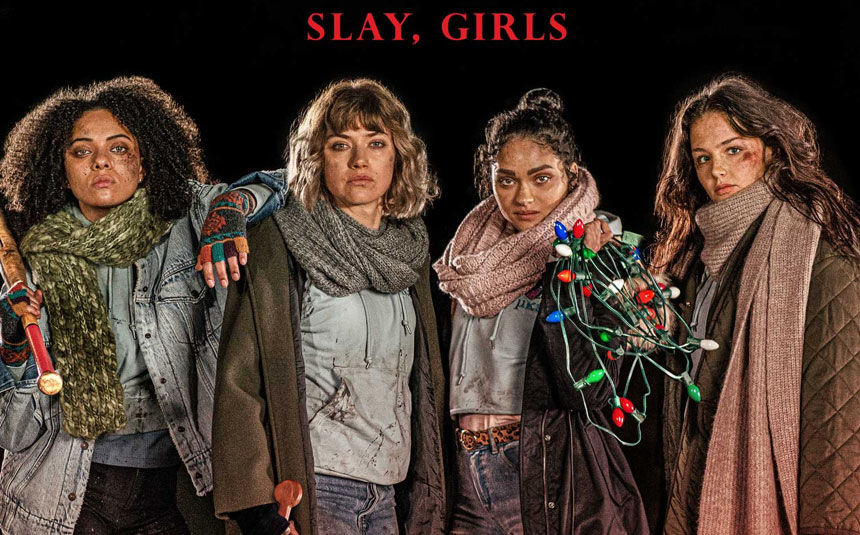Birds of Prey and the catch-22 of female-fronted genre movies

Following the less-than-stellar box office performance of DC’s Birds of Prey, it seems like everyone and their hyena has an opinion on why it didn’t do the commercial numbers that Warner Bros. was hoping for. This process of cinematic autopsy is nothing new, of course. Look at any movie that didn’t break even on a major scale and you’ll see a swath of think-pieces trailing behind it, offering multiple scenarios for success and “shoulda-woulda-coulda.” From a reported budget of $82 - 100 million, Cathy Yan's take on DC's girl gang of occasional heroes and anti-heroes grossed just under $202 million. Experts have blamed the marketing, the lack of general audience familiarity with the characters, the release date, and much more for its financial performance.
This week, director Kevin Smith made his own suggestion as to why Birds of Prey may have stumbled. In an extensive interview with Variety, where he mostly discusses his own career and troubles with the now-infamous Harvey Weinstein, Smith is asked about Birds of Prey, a film he admitted to greatly enjoying. Smith, who described the movie as "really wonderful," said, "I’m not an armchair quarterback. Nobody needs advice from the f***ing guy who made Yoga Hosers. But in retrospect, that was just a case of that movie didn’t need to be R-rated. Other than Ewan McGregor going, “You f–king moron,” there’s not much in the movie to require it being R-rated. If you dropped it to a PG-13, I think you would’ve hit your core. It’s an aspirational movie, right? It’s about ladies getting together, girl power. And I would imagine a bunch of tween girls would have really enjoyed the hell out of that. And that’s coming from a guy who’s been making R-rated kids movies his whole career. Believe me, I know."
The offending quote, absent of further context, was posted across Twitter, inspiring pushback from fans, which was a little unfair to Smith when you took the context into consideration. He’s certainly not the only one who has suggested that Birds of Prey’s R-rating hindered its commercial success. Indeed, it’s been one of the more common sources of blame for those box office numbers and there is reasoning behind it — what teenage girl wouldn’t have loved the chance to see a technicolor girl gang movie without having to be accompanied by a parent? The difference with this discussion as it pertains to Birds of Prey is that, frankly, it feels like so many of these points are being made in bad faith, and the ones put forward even with the best of intentions just further expose how women-fronted genre movies can’t win whatever they do.
So much of the chat around Birds of Prey feels reminiscent of what happened with the recent remake of the horror classic Black Christmas. Originally intended to be an R-rated slasher film, Sophia Takal's movie was PG-13, which Takal hoped would make it accessible to new audiences, particularly young women who were interested in horror. Black Christmas co-writer April Wolfe took to social media to explain the decision, noting that the "timely" subject matter made the choice to give the film that lesser rating more relevant than ever. This choice saw the movie face criticism for supposedly watering down the point of the story and the box office remained disappointing.
There are myriad reasons as to why films flop and we could be here all day listing them. Black Christmas and Birds of Prey are certainly not unique for making less money than anticipated, but the conversations surrounding them have emphasized the endless moving of the goalposts that happens nowadays with women-made and fronted genres movies and how we define them as successes.
The past five years or so of this phenomenon has been inescapable and exhausting. Think of the ridiculous and insidious discourse that ended up plaguing the 2016 female-led reboot of Ghostbusters. To even mention the movie on social media meant you were inevitably opening yourself up to a barrage of bad faith whataboutism at best and violent abuse at worst from a weaponized right-wing hate movement that latched onto pop culture as a way to further bigoted rhetoric in the mainstream. To add insult to injury, when the film underperformed at the box office, it was used as “proof” that women-fronted movies like this just don’t work. Never mind extenuating circumstances like the film’s very large budget or confused marketing; no, the problem was the women, and this attitude has permeated not only the internet but mainstream entertainment reporting in a deeply toxic way.
This rhetoric has been a driving force throughout pop culture for a very long time but it’s felt particularly poisonous in recent years because of this heated ecosystem. Every time a new genre film with a sizeable budget and a female lead was announced, the same splurge of think-pieces emerged asking increasingly tiring questions about whether “audiences were ready” for it. Every decision made was seen as proof of a flop in waiting, from the hiring of a female director to the rating to the release date. There was a level of scrutiny and rule changing that didn’t seem present with the glut of genre films focused on men (or at least white men, as the race-baiting discourse around Black Panther and John Boyega in the Star Wars trilogy proves). On top of that was the ridiculous pressure to not only be a hit but to represent every female-fronted movie of generations past. These opportunities were so few and far between and everyone knew that Hollywood is just fickle enough to decide that one big-budget movie made by and for women underperforming financially is reason enough to not make another one for years to come. Women in Hollywood don’t get to fail in the same way that men do, and that pressure is made all the harder for women of color and queer and trans women.
We’re now in a post-Wonder Woman and Captain Marvel world but the rules still feel crooked. The rhetoric remains noxious, be it the endless attacks against Brie Larson for being “too feminist” or the casting of a Black actress as the new Catwoman. No matter how many billions of dollars these films make, it still feels like we have to approach every new release as the first, last, and only time we’ll get to see women front and center lest the whole industry falls apart and decides us females just aren’t worth it.
Birds of Prey continues to face this, with criticisms from plenty of bad-faith corners decrying the film for being too stylized or not faithful to the comics, and way too many dudes are still mad that Harley Quinn’s outfits weren’t hot enough for them. The default mode of thinking remains that such films are “universal” in their appeal when catering to men, while ones designed primarily to cater to women are just for that half of the population. These films are always examples to be made of, easy targets for the bad-faith crowd, or statistics to hold up to prove a falsehood about women in film. It does all of these movies a disservice, but especially Birds of Prey, a rollicking and aesthetically dazzling riot of anti-heroines in all of their unruly glory. Hopefully, when the dust settles and as the film continues to find its audience, it’ll get to be discussed on its own terms. It’s the least that it deserves.





























